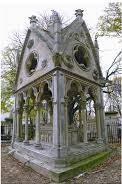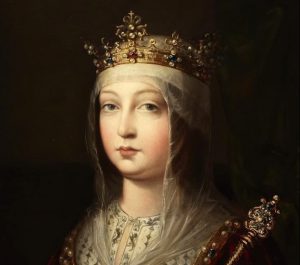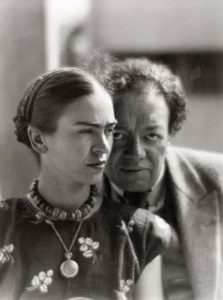Heloise was known as a woman of knowledge and intelligence. From a young age, she was considered a prodigy, a scholar in poetic literature, and well-learned in the classical languages of Latin, Greek, and Hebrew. But her talents did not stop there. Heloise’s desire was to obtain even higher levels of education. She wanted to develop a deeper understanding into philosophical ideas like the spiritual meaning of love and friendship.1 So when word of her educational gifts got out and she was given a scholarship to the Paris School of Notre Dame, she took the opportunity. When she first arrived there, around 1118 CE, it was a shock because not only was she a woman, but she came from a family of humble means.2 Though after her arrival at Notre Dame, her desires took a completely new direction from her original plan. Heloise no longer craved for education; she craved for love and the need to be by Abelard’s side as his lover.
Heloise was between fifteen and seventeen years old when she first meet Abelard. Abelard was considered to be one of the most amazing scholars around, so as soon as Heloise began to attend the Paris School of Notre Dame, her Uncle Fulbert took it upon himself to have Heloise placed under Abelard’s teachings. What he would not have expected was that this would end up turning the two into lovers. The long hours of teaching and learning were exchanged for hours simply spent together. Their relationship grew quickly, and their desire to be together at all times became stronger; yet the couple knew that this would not be possible. Their relationship could not be known to others, due to Heloise’s age, and if anyone were to find out about them, they would be shamed and punished. Their only solution to their situation was to runaway and secretly get married. But this saddened Heloise. She understood that this would be the only way to be Abelard’s wife officially, so she took the chance and moved in with Abelard’s family. Soon enough, she found herself pregnant, and gave birth to Abelard’s son, whom she would leave in the care of Abelard’s family when Abelard had to move back to Paris to teach.3

Upon returning to Paris, Heloise decided to move back in with her uncle’s family. Both Abelard and Heloise were shocked to find out that her family had found out about their relationship and marriage, and they were not happy. They found it to be outrageous, and were very disgusted; yet they came to an understanding with Abelard and promised not to speak a word about their relationship; but upon Abelard’s departure for his new job, a new fear emerged. Heloise’s relatives began to think that Abelard may have abandoned his wife and that he would no longer take care of Heloise. They became furious, and out of spite, they went back on their promise to Abelard, and they began to attack Abelard and spread the news of his marriage. This was devastating to the couple, but the worst part had yet to come. Heloise’s uncle would end up hurting the couple even more.4
Uncle Fulbert became obsessive over Heloise. He claimed that he had done everything due to his “love” and “devotion” towards Heloise. He no longer saw Heloise as his niece, but as a women, and his “affection” and “love” for her was no longer familial, and it angered him that Heloise’s mind and body was not his, and that the cause of the love in her heart and her happiness was that of another man. It pushed him to hate her. His hate grew more when he started to notice the changes in Heloise, and he decided that the best revenge he could have on Abelard was to hurt the thing he loved the most. He began abusing Heloise both mentally and physically. He would take every opportunity he had to jump upon Heloise and exert violence upon her, hitting her, insulting her, and hurting her.5 His abuse of Heloise came to an end when Abelard took notice of it and quickly pulled Heloise away from her abuser and “home,” and moved her back in with his family, who would take care of her. Abelard decided that it would be better for her to stay with his family until things calmed down.6
Soon after Abelard’s departure from Heloise, he started in his new position as a monk in the Convent of Argenteuil, which is a Christian community under monastic vows. Soon the word of their marriage started to spread faster and many deemed that the couple deserved a punishment for their unholy relationship. Abelard had decided that no matter what kind of punishment was present, he would take full responsibility for it, as he did not want Heloise’s reputation to suffer. So he came up with the decision that, for a while, they would have to live separately, until he could come up with something to help keeping her safe. While they were only separated for a bit, they still continued exchanging love letters.6

Time passed, and Heloise became a nun in the same convent where Abelard worked. Abelard had begged Heloise to become a nun, and she caved into his wishes and became a nun in the same convent. Abelard saw this as an opportunity to keep her safe and allow her to expand her knowledge.8 While he believed this would help her grow in her educational skills, she saw it as opportunity to be closer to him. Heloise hoped that by working in the same place, their love would be rekindled. Yet when the Convent of Argenteuil found out about their relationship and the jealousy that other monks felt towards Abelard and his success, they immediately reported Abelard. Abelard was able to repent and receive permission to live a monastic life in solitude by the French King Louis VI. Sadly, Heloise did not receive the same treatment. She was kicked out of the convent and when a new Abbott took control of the Covent, he was quick to get rid of the nuns that were part of Heloise’s community.9 Soon word of Heloise’s removal in the convent and of her and her sisters wandering around as homeless reached Abelard, he decided to send them to the Oratory of the Parcelete, which he had abandoned a few months earlier to be a monk at a monastery in Brittany. There Heloise showed that her community of nuns were able to survive hardships and keep their faith strong, and then she became the Abbess of the Oratory of the Parcelete.
The newly created distance began to take a toll on their relationship, and soon it began to weaken the bond they had. During Heloise’s time at the abbey, she felt alone and unhappy. She often blamed this unhappiness on Abelard, as she believed that his job mattered more to him than their relationship. So she decided to fill her emptiness by studying about folk medicine and “modern” medicine. Due to the knowledge she acquired through these new studies, she started to be known as an incredible physician. Yet she could not get rid of her yearning for her lover, and in hopes that if by conveying her emotions to him, Abelard would return to her. She began to write letters to him more often. She often would confess of moments where her mind would make up images of intimate moments they had shared, how her attention would divert, and that her prayers were no longer pure, but filled with lewd visions. She blamed him for her misery and would call herself disgraceful names in order to shame herself for her unholy actions.10
Due to the suffering that both were enduring, Abelard decided to take action. He wrote his last letter addressing Heloise as his wife. In the letter, he came to conclusion that they could no longer be together. His reasoning was that because both of them worked under God, their love was no longer marital but had converted to a religious love for God. He wanted Heloise to see him as a coworker that was in a higher, superior position than her. He told her to no longer address him as her husband but as her superior, and that their letters could no longer be love letters, but had to be professional. While Abelard was quick to accept this new reality, Heloise struggled to accept it and blamed him for it. Heloise continued writing letters to Abelard addressing him as her lover and describing her struggles to accept the horrible truth of no longer being his wife. She felt betrayed by his decision and could no longer be happy.11

Yet as time passed, Heloise came to accept the reasoning behind the breaking of their marital bond.12 Her letters now no longer addressed Abelard as her lover, but as her superior, and they no longer went into how much she loved him.13 She became more courageous and started to challenge Abelard’s philosophy and beliefs, and used that experience to build her own philosophical ideals. She often challenged his perception of a woman’s role and would try to make him understand the dangers that women had to face in life.
In one of her last letters exchanged with Abelard, Heloise exchanged word of one of her most impacting works and challenged Abelard: the creation of the Problemata Heloissae, which was a set of forty-two theological questions that would later become the basis for the monastic way of life for women. She also began to pay more attention to her education and strove to fulfill her prior desire, which she obtained by finding meaning to her spirituality through her studies.14

Yet her work caused an impact in the following centuries.15 She argued against the labels placed on women and the role of being seen as passive victims of physical pleasure. Heloise went even farther by arguing that it was men’s natural tendency towards infidelity that was the cause of women’s suffering and victimhood.16
Heloise’s tragic love story is now seen as a story of self-sacrificing love that led to the growth of an inspirational woman who, even though she is not well known today, she can be seen as a female voice along the path to modern feminism.
- “Heloise – New World Encyclopedia,” accessed October 1, 2021,1, https://www.newworldencyclopedia.org/entry/heloise. ↵
- Burge James, Heloise & Abelard : A New Biography (San Francisco : HarperSanFrancisco, 2003), 17, http://archive.org/details/heloiseabelardne00burg. ↵
- “Héloïse | French Nun,” Encyclopedia Britannica, accessed October 1, 2021,1, https://www.newworldencyclopedia.org/entry/heloise. ↵
- “Héloïse | French Nun,” Encyclopedia Britannica, accessed October 1, 2021,1, https://www.newworldencyclopedia.org/entry/heloise. ↵
- Peter Abelard and Héloïse, The Letters of Abelard and Heloise (Harmondsworth, Penguin, 1974), 30, http://archive.org/details/lettersofabelard00abel. ↵
- “Héloïse | French Nun,” Encyclopedia Britannica, accessed October 1, 2021,1, https://www.newworldencyclopedia.org/entry/heloise. ↵
- “Héloïse | French Nun,” Encyclopedia Britannica, accessed October 1, 2021,1, https://www.newworldencyclopedia.org/entry/heloise. ↵
- Burge James, Heloise & Abelard : A New Biography (San Francisco: Harper San Francisco, 2003), 27, http://archive.org/details/heloiseabelardne00burg. ↵
- “Héloïse | French Nun,” Encyclopedia Britannica, accessed October 1, 2021,1, https://www.newworldencyclopedia.org/entry/heloise. ↵
- Burge James, Heloise & Abelard : A New Biography (San Francisco : Harper San Francisco, 2003), 23, http://archive.org/details/heloiseabelardne00burg. ↵
- Nancy May Arenberg, “Textual Transvestism: (Re)Visions of Heloise (17th-18th-Centuries),” web page accessed September 25, 2021, 311. ↵
- Nancy May Arenberg, “Textual Transvestism: (Re)Visions of Heloise (17th-18th-Centuries),” web page accessed September 25, 2021, 316. ↵
- Burge James, Heloise & Abelard : A New Biography (San Francisco : Harper San Francisco, 2003), 23, http://archive.org/details/heloiseabelardne00burg. ↵
- Burge James, Heloise & Abelard : A New Biography (San Francisco : Harper San Francisco, 2003), 26, http://archive.org/details/heloiseabelardne00burg. ↵
- Godman Peter, “Paradoxes of Conscience in the High Middle Ages : Abelard, Heloise and the Archpoet,” web page accessed September 25, 2021, 121. ↵
- Nancy May Arenberg, “Textual Transvestism: (Re)Visions of Heloise (17th-18th-Centuries),” web page accessed September 25, 2021, 208. ↵



13 comments
Christopher Hohman
Nice article. I have never heard the story of Abelard and Heloise before reading this article. It is unfortunate that Heloise experienced such poor treatment from her own family. Her uncle appears to have lusted after her and wanted to keep her for himself, however, Abelard’s family stepped in to help her and take care of her. I feel bad also that their marriage broke apart and their relationship gradually withered as they entered religious life. Heloise seems to have genuinely loved Abelard and she wanted to be with him. I am glad that she found new happiness in her religious life though.
Santos Mencio
An incredibly interesting article about two people I had never heard about. There is certainly a degree of tragedy in their story, it seems like everything in the world was conspiring against them. It was certainly fascinating to read about Heloise’s contributions to many fields of study, something that would likely not have happened had she not engaged in a relationship with Abelard.
Hali Garcia
This is a very interesting article. I have never heard of Heloise or Abelard and I learn a lot about them through this article. I was struck by how they realized Heloise’s age was a problem during this time and they decided to keep their interest in each other a secret. They really did have a sad story because while they did love each other, they had to keep it a secret and in the end, they could not be together.